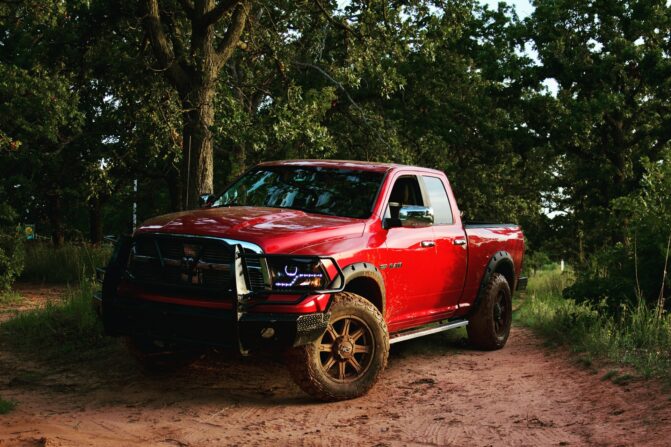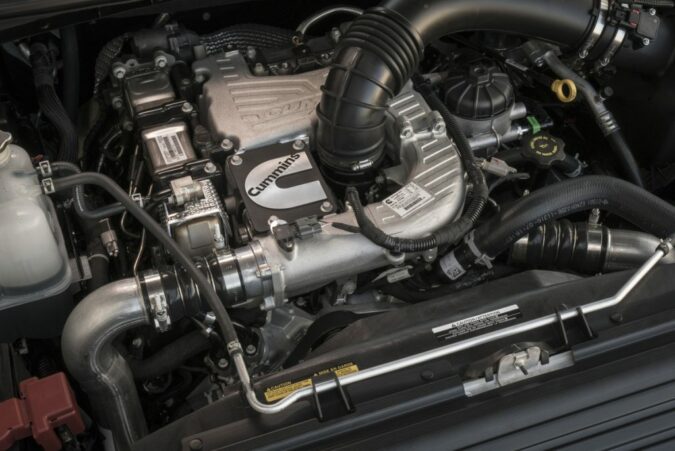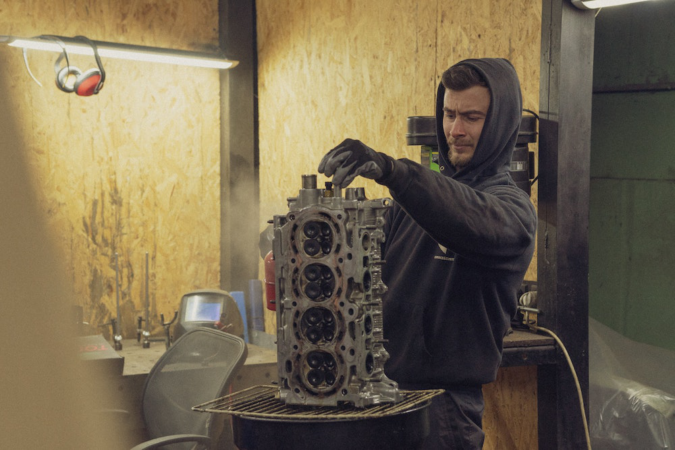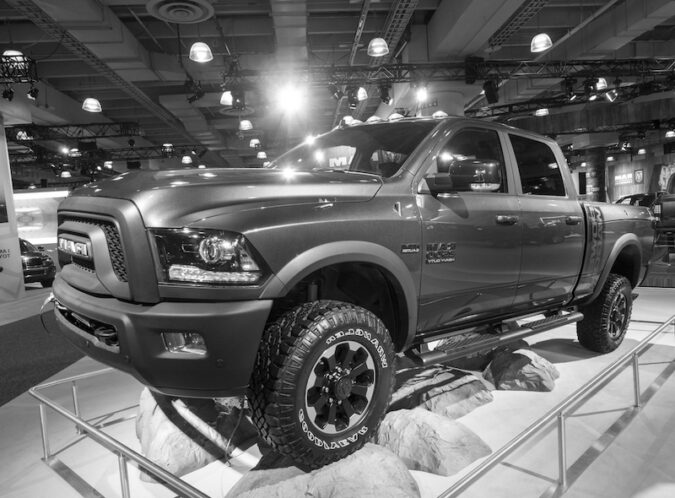If you are a gearhead, you probably would have heard of the name “Cummins”. For many decades, this line of turbo-diesel engines has powered Dodge vehicles. However, there are some Dodge Cummins years to avoid that you should know about.
All of us have our bad days, and this is true for vehicles as well. Some model years are well-known for their bullet-proof reliability, while others aren’t. In this article, we’ll talk about some of the unreliable years of the Dodge Cummins engine.
Knowing the model years to avoid will surely help you when the time comes to make a purchase decision. Keeping clear of these worst years would save you both time and money. Not only that but buying a reliable model will also help you to keep peace of mind. We know that you are eager to get to know what Cummins years you should avoid. So, without further ado, let’s get started!
Dodge Cummins
Before discussing Dodge Cummins years to avoid, it is important to take a look back at the history of this legendary engine. This powerful diesel was the brainchild of an American named Clessie Cummins.
He started working on diesel engines in 1918, by partnering with a Dutch engine manufacturer named Hvid. In 1930, Cummins showcased a Packard Touring sedan outfitted with one of his engines. The revolutionary diesel returned an average fuel consumption figure of 26 miles per gallon, which was a mind-blowing figure at the time.
Throughout the years, Clessie Cummins did several public exhibitions to draw public attention to his diesel powerplants. Some notable feats include driving a truck with one of his Model U engines from New York to Los Angeles in 97 hours, entering a Duesenberg with a diesel engine in the 1931 Indy 500, and achieving 40 MPG with one of his new lightweight engines.
However, the most notable change to happen to the humble Cummins diesel engine was partnering up with Chrysler. By the 1980s, Chrysler was the only major American car maker not to offer a diesel engine option in their trucks. The Detroit-based company solved this issue in 1989, by introducing a 160-horsepower Cummins B-Series engine option for their Dodge Ram pickup truck. Since then, every Ram model has offered the choice of having a Cummins diesel engine.
Throughout the years, there have been several notable Cummins engines. Next up, we’ll discuss some of the most important ones you should know about.
6.7 Cummins
The 6.7-liter is one of the latest additions to the legendary Cummins B Series of engines. This engine made its debut in 2007 with the Dodge Ram. The straight-six turbodiesel has 24 valves and is considered by many to be one of the best diesel engines ever made.
Throughout the years, this engine received some major upgrades from the manufacturer. As of 2021, the 6.7 Cummins made an impressive 400 horsepower along with 1000 lb-ft of torque. Currently, Dodge offers this engine with both the Ram 2500 and 3500+ pickup trucks.
Although this engine is considered to be one of the most reliable, several issues have been identified throughout the years. Some of the most common problems with this engine are,
- Turbocharger Failure
- Fuel Dilution
- Clogged Diesel Particulate Filter
- Head Gasket Issues
1. Turbocharger Failure
As you might have guessed, the turbocharger is one of the most important parts of a turbodiesel engine. Over years of constant use, the turbochargers can develop problems that may require you to take a trip to the mechanic.
Some of the most common symptoms of 6.7 Cummins turbo failure include poor engine performance, whining noises, slow spooling, and excessive smoke coming from the exhaust.
Worn bearings and leaking oil seals account for the majority of complaints from 6.7 Cummins owners. As these engines run at high RPMs, it is not uncommon for the turbo bearings to wear downs faster.
As a result, the compressor wheel has the risk of impacting the turbo housing, resulting in complete turbo failure.
Additionally, if cold air comes into contact with the hot turbo seals it could result in turbo seal problems as well. We always recommend letting the truck cool down before turning the engine off due to this exact reason.
If your turbo has some severe issues and needs to be replaced, be prepared to pay north of $1000 for an OEM part. On top of that, you’ll have to pay the labor cost as well. However, you can upgrade the turbo to a larger, more efficient aftermarket one for around the same price as well.
2. Fuel Dilution
Fuel dilution is a common issue in diesel engines, but the 6.7 Cummins is known to be affected by this more than others. 5% is the acceptable fuel dilution limit set by Dodge, and anything over that may require some repairs.
As there are no immediate symptoms of this issue, the best way to diagnose fuel dilution is by doing an oil analysis once in a while.
This problem is mainly caused by small amounts of fuel sticking to the cylinder wall during the exhaust stroke and mixing with the engine oil.
You can reduce the amount of fuel dilution by allowing the engine to warm up before driving with heavy loads. Furthermore, preventing from idling the engine for long durations of time will also minimize fuel dilution in your Cummins engine.
3. Clogged Diesel Particulate Filter
The diesel particulate filter is an important piece in the exhaust system of the 6.7 Cummins engine. However, earlier versions of this engine are prone to putting out more particulates, which can clog this filter quite quickly.
A few common symptoms of a clogged DPF include longer crank times, power loss, and engine fault codes. With a clogged diesel particulate filter, the engine can’t breathe properly, which is what results in these issues.
Cleaning the filter is a cheap but short-term fix for this issue. On the other hand, you can get a refurbished one for around $1000. Completely replacing the exhaust system of the truck with an aftermarket one is another route some customers take to combat this issue. Although this eliminates the risk of DPF clogging happening in the future, it is an illegal practice in terms of emissions control (to learn more, check out our write-up on do all cars have a catalytic converter).
4. Head Gasket Issues
The final 6.7 Cummins reliability issue we will be talking about is related to its head gasket. If you spot whiteish smoke coming from the engine, coolant mixed with oil, or the vehicle is constantly overheating, your 6.7 Cummins engine might have a blown head gasket.
Head gasket failure is another expensive problem to fix properly. Depending on the year and model of the truck, head gasket repairs can cost anywhere from $100 – $1000. Some Cummins owners suggest upgrading the head studs and fire rings to prevent future head gasket failures from happening.
5.9 Cummins
Mainly designed for medium-duty commercial pickup trucks, the 5.9-liter Cummins engine first found its way under the hood of a Dodge pickup truck in 1989. Since then, Dodge has offered three generations of this turbodiesel powerplant.
Nicknamed the “12v”, the 5.9 Cummins has some reliability issues exclusive to it as well. Heater grid and Throttle Position Sensor (TPS) failures are common, as are transmission problems. Although there are a handful of minor reliability issues, overall the 5.9 Cummins is considered by many to be one of the best diesel engines ever made. With proper maintenance, one of these can easily last over 500,000 miles.
1st Gen Dodge Cummins
As we previously mentioned, there have been four generations of Cummins engines over the years. It was initially offered in the 2500 and 3500 series Dodge Ram pickup trucks. Although it only had 160 horsepower at launch, the 400 lb-ft of torque was more than any gasoline Ram engine option offered at the time.
On top of the additional torque, the Cummins diesel was more fuel efficient than the gasoline engines as well. Thanks to its use of both direct and turbo injection techniques, the Cummins engine was more reliable than contemporary Ford or Chevrolet engines that used glow plugs (make sure you understand just how many spark plugs does a diesel have).
This generation of Cummins engines had been in production since 1984 and is commonly called the 12-valve due to its cylinder head design. In the Ram, the Cummins engine was paired with either a five-speed manual transmission or a Mopar 727 automatic unit.
The first generation Dodge Cummins engines came with a P7100 mechanical fuel pump, which could be modified to produce massive amounts of power. On the other hand, the main caveat of these first-generation Ram is an issue that gearheads refer to as the “Killer Dowl Pin”.
You see, these engines had a steel pin on top of the timing gear. Sometimes, this pin can fall into the timing gear, catastrophically damaging the engine in the process. If you are planning to buy a Ram with one of these engines, make sure to check whether the necessary fixes for this issue have been completed. The final first-generation Cummins engines rolled off the production line in 1994.
2nd Gen Dodge Cummins
Second-generation Cummins engines had a production run of 4 years, between 1994 and 1998. At first, the power output of the 12-valve Cummins engine was 175 horsepower. The horsepower figure increased to 215 in 1996.
Another milestone in the history of the Cummins engine happened in 1998. This new engine was named the Interact System B Series. This name highlighted its use of electronic fuel injection. Additionally, the cylinder head was also redesigned to incorporate a 24-valve design.
In 2001, two new variants of this engine were offered to the public. The regular version had an adequate 235 horsepower and 460 lb-ft of torque. On the other hand, a 245 horsepower High Output version with a higher compression ratio, a bigger flywheel, and powdered metal valve seat insets was also on offer for those who desired a more powerful engine.
Fractured engine blocks due to casting defects were an issue found in Rams with Cummins engines that were made in 1999 and 2000. If you spot a “53” cast onto the side of an engine block, you are looking at one of these faulty engines.
However, these engines are hard to come by. That is because Dodge replaced most of them under warranty. Other than block fractures, valve seats cracking when the truck reaches higher mileages is another problem that affects 24-valve Cummins engines.
3rd Gen Dodge Cummins
The third-gen Dodge Ram with the Cummins engine debuted in 2003. Along with a new and improved body, this generation of Ram brought a redesigned Cummins engine too.
The inclusion of common rail injection increased engine power to 305 horsepower and 555 lb-ft of torque. A year later, a new version called the Cummins 600 entered the market. This was a high-output engine that made 325 horsepower.
2007 saw the introduction of the Cummins 6.7-litre engine. The increased bore and stroke of this engine increased the power output to 350 horsepower and 610 lb-ft of torque.
This engine came with many new technologies, with the main goal of improving both engine power and fuel economy.
The introduction of a Variable Geometry Turbocharger (VGT) was one such innovation. This turbo had sliding vanes in the exhaust system, which created optimum back pressure and reduced turbo lag. Additionally, this new turbocharger could function as an exhaust brake for towing functions too.
4th Gen Dodge Cummins
The fourth-generation Ram trucks first hit the scene in 2009, and they continue to be sold until this day. As per tradition, this generation came with powerful Cummins turbodiesel engines as well.
Between 2010 and 2012, the Cummins diesel engine made 350 horsepower paired with 650 lb-ft of torque. The introduction of a new Aisin ASC69RC automatic transmission in 2013 unleashed 385 horsepower from the powerful engine. Engine torque figures further increased to a massive 865 lb-ft in 2015.
Another massive power increase of the Cummins engine happened in 2020. Here, the horsepower figure increased all the way up to 400. But, the torque figure was what impressed most gearheads. The massive 100 lb-ft on offer provided the Ram with towing capabilities that equaled semi-trucks.
Although this generation of Dodge Rams with Cummins engines offered many benefits, they were subjected to a number of recalls. These recalls were due to a variety of issues, ranging from loose steering linkages to faulty tailgate latches.
There you have it, an overview of all Dodge Cummins engine generations so far. Being well-informed about all these generations will surely help you when the time comes to purchase a new diesel pickup truck.
Cummins ISX Years To Avoid
Cummins diesel engines have a reputation of being some of the most reliable powerplants to be ever put in production vehicles. However, there are some model years that have a worse reliability record than others. Were you curious about Dodge Cummins years to avoid? If so, this section is just for you. The worst Cummins model years you should keep an eye out for are,
- 1992
- 1999
- 2001
- 2003
- 2006
Dodge Cummins Years To Avoid #1 – 1992
1992 belonged to the first generation of Dodge Cummins engines and is considered by many enthusiasts to be one of the worst model years in the engine’s history. These engines are over three decades old, and are some of the most inefficient diesel engines money can buy.
Another area where these engines show their age is performance. Modern Cummins diesel engines are renowned for their massive torque figures. However, the story was different thirty years ago. When compared with these newer engines, the torque and horsepower figures of the 1992 Cummins engine are almost laughable.
Dodge Cummins Years To Avoid #2 – 1999
Unreliability, inadequate power figures, and being complicated to work on are some factors that contribute to making 1999 a Dodge Cummins year to avoid. Although it belonged to the redesigned second generation, the new improvements weren’t enough to save this engine from being regarded as one of the worst.
Dodge Cummins Years To Avoid #3 – 2001
If you want to save money in your wallet, 2001 is another one of the Dodge Cummins years to avoid. This model year is notorious for having “53” engine blocks that are prone to cracking. Additionally, 2001 Dodge Cummins engines suffer from injector issues as well.
Although these engines are known to have these issues, they still command a quite high price. After taking all these factors into consideration, you are better off spending your money on a more reliable vehicle.
Dodge Cummins Years To Avoid #4 – 2003
Being another third-generation Cummins engine, the 2003 model was plagued with a bunch of issues that plagued the previously mentioned 2001 model. On top of the already high purchase price, these engines are expensive to maintain as well.
The 2003 Dodge Cummins engine is not unfamiliar to scrutiny. In fact, this engine was scrutinized since the day of its launch both by media and customers. As a result, 2003 had the lowest number of sales out of any Cummins generation.
Dodge Cummins Years To Avoid #5 – 2006
2006 is the final year we’ll be taking a look at in our discussion of Dodge Cummins years to avoid. This model year had many reliability issues, especially related to airflow. On top of that, the 2006 Dodge Cummins trucks are popular for steering and suspension issues that can result in catastrophic accidents.
No matter whether you are an average joe or a die-hard truck enthusiast when it comes to purchasing a Dodge with a Cummins engine, remember to avoid these model years at all costs.
Best Cummins Engine
It is unfair to discuss Dodge Cummins years to avoid without taking a look at the most reliable ones. There are several Cummins engine model years in the running for being the best. They are,
- 2004
- 2008
- 2011
- 2019
Best Cummins Engine #1 – 2004
In 2004, the Cummins engine was fitted with some new components that made it more powerful and highly efficient. The engine capacity was better than before, and the torque figures ranged between 550 – 650 lb-ft. Additionally, the 11.4-liter engine oil capacity ensured a carefree driving experience wherever you go.
Best Cummins Engine #2 – 2008
For people that want a spacious pickup truck with a reliable engine, the 2008 Dodge Ram with a Cummins engine is the vehicle to get. The brand-new four-door cab design pleased many buyers, and the improved diesel powertrain took a step in the right direction.
These engines packed anywhere between 350 to 400 horsepower. Not only that, but they also had monstrous torque figures, topping out at 1000 lb-ft in the most powerful version.
Best Cummins Engine #3 – 2011
In 2011, the Cummins turbodiesel engine came paired with Electronic Stability Control, which made controlling the vehicle much easier in adverse conditions. However, this feature was only offered in the more powerful 2500 and 3500 models.
Best Cummins Engine #4 – 2019
2019 is one of the more recent years of the Cummins engine, and it is also one of the best. This model year featured new trim levels along with the latest technological features. This engine provided enough grunt to power the bigger and better trucks that were out on market at this time.
Verdict
There is no doubt that turbodiesels are the engines to get if you plan on owning a pickup truck. And out of all the turbodiesels in the world, Cummins engines are the unopposed kings of the mountain.
Although these engines offer great fuel economy, horsepower, and torque figures, they are not without their issues. 1992, 1999, 200, 2003, and 2005 are considered to be the Dodge Cummins years to avoid in terms of reliability. Choose a model that is not from these years, and you’ll have a powerful and reliable pickup truck at your disposal.
FAQs On Dodge Cummins Years To Avoid
How Much Oil Does A 6.7 Cummins Take
The 6.7 is one of the biggest diesel engines made by Cummins. As a result, it takes a massive 12 quarts of oil to function with maximum efficiency and performance.
What Is A Cummins
Cummins is a world-renowned diesel engine manufacturer based in the United States of America. Since 1989, their engines have been available in Dodge Ram pickup trucks.
What Is The Best Diesel Truck
There are many great diesel trucks made by all sorts of major vehicle manufacturers. For decades, Cummins has provided engines for some of the most popular diesel trucks ever manufactured.
Who Makes Cummins
Most people have the misconception that Cummins is owned by Dodge. However, this is not true, as Cummins is an independent company.
What Used Diesel Truck Should I Buy
The diesel truck you should buy entirely depends on how you intend to use it. If you plan on heavy loads, we recommend you go for one that has a high torque output.





